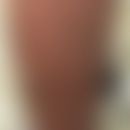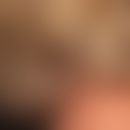Synonym(s)
DefinitionThis section has been translated automatically.
Sting by fleas with consecutive formation of itchy wheals or papules with an accentuated (usually hemorrhagic) central puncture site.
PathogenThis section has been translated automatically.
Mainly human fleas (Pulex irritans), also dog fleas, cat fleas, see also fleas.
You might also be interested in
LocalizationThis section has been translated automatically.
Since fleas are mainly found in clothes, the stitches are primarily found on clothed skin areas.
ClinicThis section has been translated automatically.
Mostly multiple, grouped(typically triple configurations of the stitches -breakfast, lunch, dinner- the flea performs test stitches before the main stitch), asymmetrically arranged wheals and itchy papules; rarely blistering. Centrally punctiform haemorrhagic punctures, easily visible under glass spatula pressure.
Differential diagnosisThis section has been translated automatically.
Complication(s)(associated diseasesThis section has been translated automatically.
Superinfections can occur due to transmitted human pathogenic germs.
The rat flea is a carrier of Yersinia pestis.
Dog fleas/cat fleas are intermediate hosts for Dipylidium caninum (tapeworm), Francisella tularensis (tularaemia), Rickettsia (typhus).
External therapyThis section has been translated automatically.
Lotio alba possibly with addition of 2-4% polidocanol (e.g. R200)
Alternatively: 1% menthol solution.
Alternative: short-term application of topical glucocorticoids e.g. Betagalen lotio or cream.
In case of stronger local inflammatory reaction it is recommended to apply a potent glucocorticoid (e.g. Clobetasol cream) thickly on the back of a knife and to occlude with a gauze compress.
Note: The value of local antihistamines (Fenistil gel, Soventol gel) is controversial.
Internal therapyThis section has been translated automatically.
ProphylaxisThis section has been translated automatically.
Rubbing with repellents (e.g. Autan).
It is important to clean up the environment (dogs, cats and their stores, room remediation) with substances such as permethrin, pyriproxifen, piperonyl butoxide. The most suitable are nebulisers (e.g. Indorex Fogger) or sprays available from the vet.
Wash bed linen and clothing hot (boil wash).
Possibly put on flea/tick collars (e.g. with the active ingredient dimpylate) for pets.
LiteratureThis section has been translated automatically.
- Zurita A et al (2019) Origin, evolution, phylogeny and taxonomy of Pulex irritans. Med Vet Entomol 33:296-311.
Incoming links (11)
Arthropods; Benzocaine; Cimicose; Ctenocephalides canis; Eosinophilia and skin; Flea infestation; Fleas; Insect bites (overview); Polidocanol zinc oxide shaking mixture 3/5 or 10% (nrf 11.66.) [white/skin coloured].; Pulicosa; ... Show allOutgoing links (17)
Antihistamines, systemic; Clobetasol propionate cream hydrophilic 0.05% (nrf 11.76.); Desloratadine; Dimetinden; Fleas; Glucorticosteroids topical; Levocetirizine; Menthol solution 1%; Pediculosis (overview); Polidocanol; ... Show allDisclaimer
Please ask your physician for a reliable diagnosis. This website is only meant as a reference.








